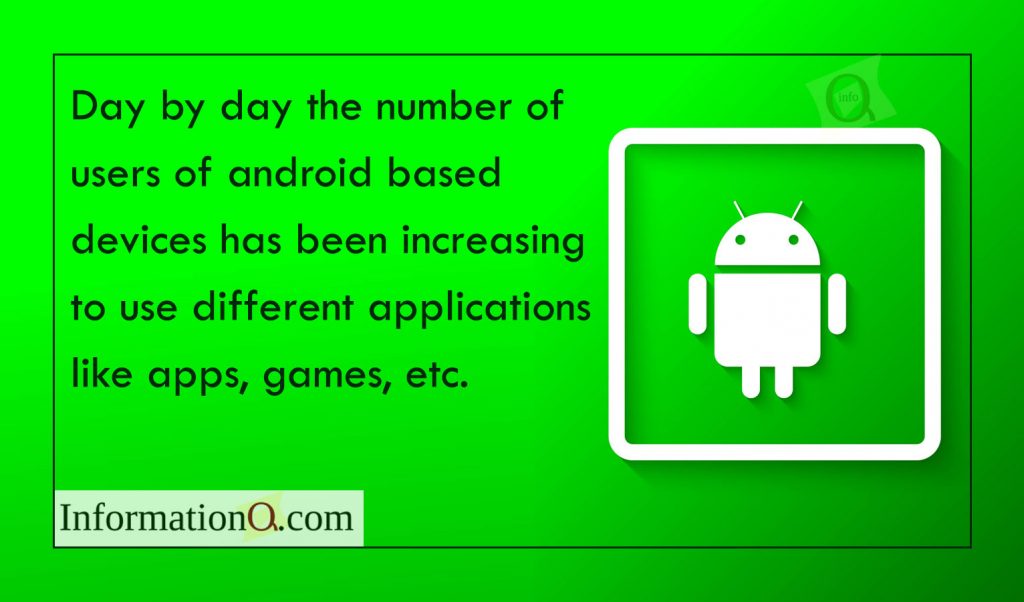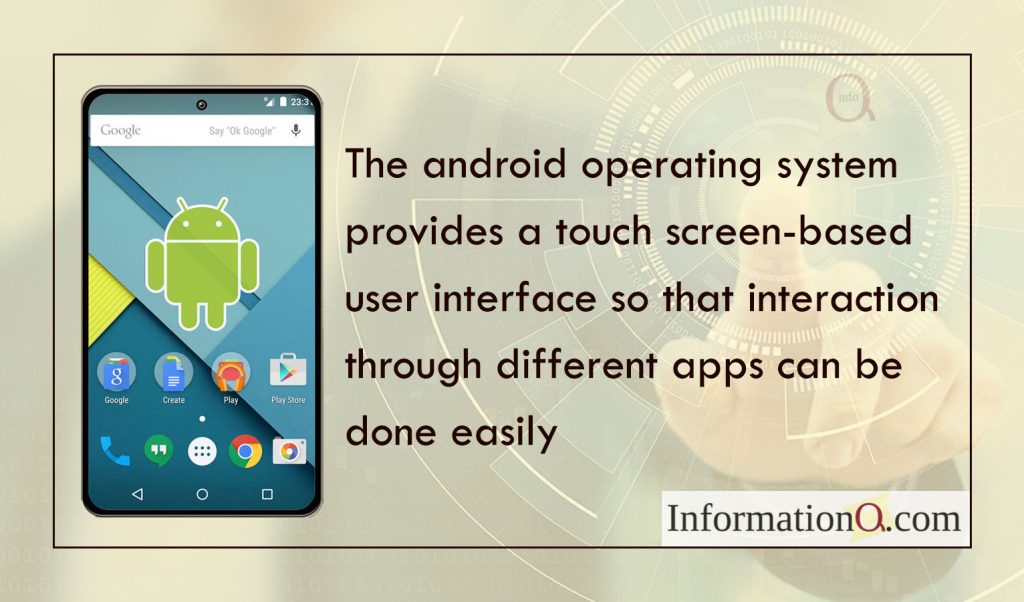Android Operating System
Android OS was developed by the OHA (Open Handset Alliance), which is led by Google Inc. The OHA is a group of several companies like Sony, Samsung, and Intel to provide services by using android based handsets. Android is the world’s most famous mobile platform that gives power to hundred to millions of mobiles around 190 countries in the world. Day by day the number of users of android based devices has been increasing to use different applications like apps, games, etc.

What is an Android Operating System?
Android OS includes an SDK (software development kit) that assists the developer in writing an original code & assembles software modules to design different android supported apps for the users. The main reason to develop apps by Developers is for different reasons and purposes. So developers decide to develop Android OS to achieve the majority of android mobile users.
An open-source operating system like Android is based on Linux with an interface of Java programming. This OS is used in mobile devices like tablet computers and smartphones. This operating system offers an integrated approach to develop an application for mobile devices which means developers require to develop Android OS & their applications must be run on different android based devices
History of Android
Primarily, the Android first version was launched by Google on Nov 5th, 2007. From there, different versions have been released. So the list of Android versions with releasing dates is listed below.
- The version Android 1.0 was released on Sep23, 2008. The API level is 1 and the version name is Apple Pie.
- The version Android 1.1 was released on Feb 9, 2009. The API level is 2 and the version name is Banana Bread.
- The version Android 1.5 was released on Apr 30, 2009. The API level is 3 and the version name is Cupcake.
- The version Android 1.6 was released on Sep15, 2009. The API level is 4 and the version name is Donut.
- The version Android 2.0 was released on Oct 26, 2009. The API level is 5 and the version name is Éclair.
- The version Android 2.0.1was released on Dec3, 2009. The API level is 6 and the version name is Éclair
- The version Android 2.1was released on Jan 12, 2009. The API level is 7 and the version name is Éclair
- The version Android 2.2 was released on May 20, 2010. The API level is 8 and the version name is Froyo
- The version Android 2.2.1 was released on Jan 18, 2011. The API level is 8 and the version name is Froyo
- The version Android 2.2.2 was released on Jan 22, 2011. The API level is 8 and the version name is Froyo
- The version Android 2.2.3 was released on Nov 21, 2011. The API level is 8 and the version name is Froyo
- The version Android 2.3 was released on Dec 6, 2010. The API level is 9 and the version name is Gingerbread
- The version Android 3.0.x11was released on Feb 22, 2011. The API level is 9 and the version name is Gingerbread
- The version Android 3.0.x was released on Feb 22, 2011. The API level is 11 and the version name is Honeycomb
- The version Android 4.0 was released on Oct 18, 2011. The API level is 14 and the version name is Ice Cream Sandwich
- The version Android 4.1 was released on Jul 9, 2012. The API level is 16 and the version name is Jelly Bean
- The version Android 4.1 was released on Jul 9, 2012. The API level is 16 and the version name is Jelly Bean
- The version Android 4.4 was released on Oct 31, 2013. The API level is 19 and the version name is Kitkat
- The version Android 5.0 was released on Oct 17, 2014. The API level is 21 and the version name is Lollipop
- The version Android 6.0 was released on Oct 5, 2015. The API level is 23 and the version name is Marshmallow.
- The version Android 7.0 was released on Aug 22, 2016. The API level is 24 and the version name is Nougat
- The version Android 8.0 was released on Aug 21, 2017. The API level is 26 and the version name is Oreo
- The version Android 9.0 was invented on Aug 6, 2018. The API level is 28 & the version name is Pie
- The version Android 10 was invented on Sep 7, 2019. The API level is 29 & the version name is Android 10
- The Android version 11 was invented on Sep 8, 2020. The API level is 30 & the version name is Android 11
- The Android version 12 was released in 2021 and it is named beta
Android Features
The main features of android OS include the following.
- This operating system can customize based on the requirement
- It supports CDMA, GSM, NFC, WIFI, Bluetooth for data transfer otherwise telephony.
- It supports 2D or 3D Graphics
- It allows the user to receive messages, make/receive & also we can send or receive the mobile data through mobile networks
- Hardware components can be accessed like GPS, Camera & Accelerometer
- WiFi technology is used in android phones to connect with other devices through different apps
- It gives support for multi-tasking so that we can move from one window to another window task. At a time, several applications can run.
- Android includes several APIs which support GPS
- In an Android, a web browser is incorporated based on an open-source WebKit layout to give support for CSS3, HTML5.
- It has a wide range of support for multimedia to perform recording or playback through microphone & camera.
- It supports media like MKV, AVI, MPEG4, FLV to record or play a variety of video or audio & includes different formats for an image like PNG, GIF, JPEG, MP3, BMP, etc.
Android Working
The android operating system provides a touch screen-based user interface so that interaction through different apps can be done easily. The user interface of an Android depends on direct manipulation. Mobile users can use touch gestures like tapping, swiping & pinching to control on-screen apps. The input text can be provided through the customizable on-screen keyboard.



The home screen of Android-based mobiles includes different panes of app icons which contains app widgets to display live auto-updating of the weather, the email inbox of the user, etc. Android OS plays multimedia content like audio, video, animation. On the top of the mobile screen is called the status bar, which displays the device data & its connectivity
The design of the Android home screen can be done through different panes so that users can swipe between the panes. Many android apps take benefit of inside hardware like gyroscopes, proximity sensors, accelerometers to react for extra user actions. These sensors are used for detecting the rotation of the screen.
The Linux kernel-based Android OS is mainly designed for touch screen-based devices because these devices are generally powered by a battery. Android OS is designed to control different processes to maintain power utilization by providing battery usage for a long time.
Advantages of Android Operating System
The benefits of the android operating system include the following.
- It supports millions of apps
- Backup & restoring of apps
- It supports third-party apps
- High job demand for Android developers
- Notifications can be displayed clearly
- It is an open-source
- Internet sharing can be done easily from one device to other.
- We can add or remove additional features
- Different models of mobiles can be selected
- It supports a large community
- Memory can be expandable
- At a time many apps can run
- It supports large screens at a reasonable price
Leave a Reply